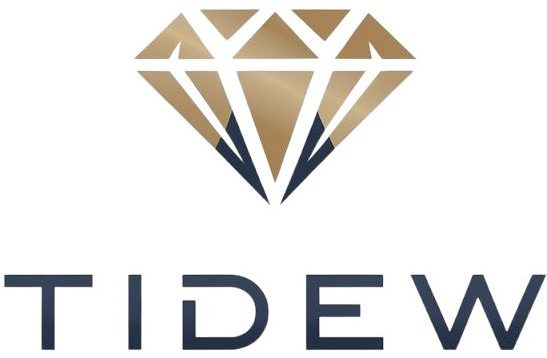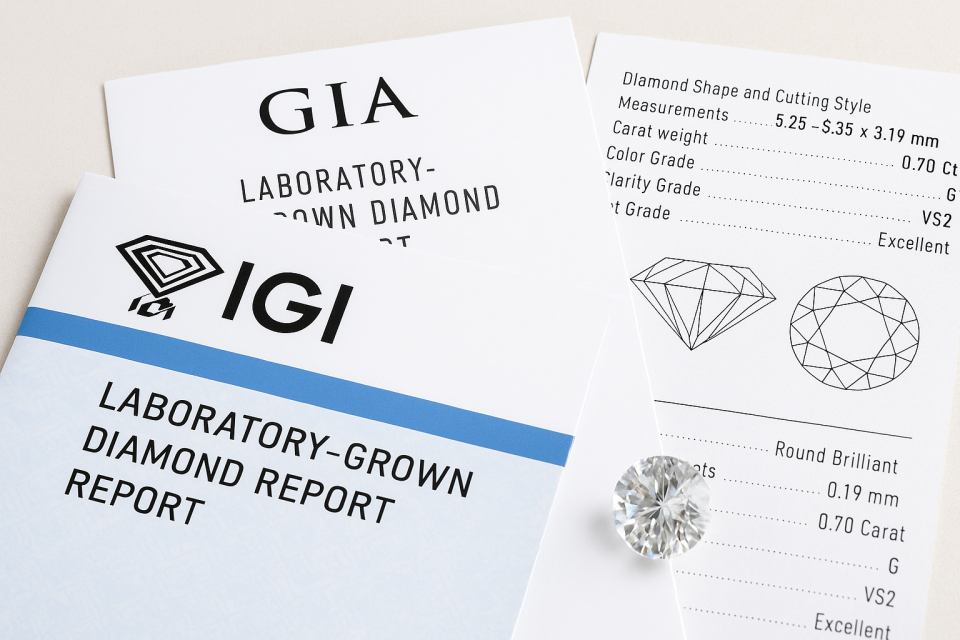Introduction
Purchasing a lab-grown diamond is an exciting investment, whether for an engagement ring, pendant, or other fine jewelry. But how do you know you’re truly getting what you paid for? The answer lies in the diamond certificate.
A diamond certificate, also known as a grading report, provides detailed information about a diamond’s quality and authenticity. In this guide, we’ll explain how to read a lab-grown diamond certificate, why it matters, and what to look for to ensure a smart purchase.
Why Certification Matters for Lab-Grown Diamonds
A diamond certificate is like a passport for your stone—it confirms its identity and quality. For lab-grown diamonds, certification is even more important because it distinguishes them from natural diamonds and simulants like moissanite or cubic zirconia.
Benefits of Certification
- Authenticity Verification: Confirms the diamond is lab-grown, not a simulant.
- Quality Assurance: Provides an unbiased assessment of the diamond’s characteristics.
- Value Protection: Helps maintain resale value and ensures fair pricing.
Who Issues Lab-Grown Diamond Certificates?
1. IGI (International Gemological Institute)
IGI is one of the most widely recognized certification labs for lab-grown diamonds. Their grading reports are detailed and trusted globally.
2. GIA (Gemological Institute of America)
The GIA is considered the gold standard for diamond grading. While GIA initially focused on natural diamonds, it now also certifies lab-grown diamonds using the same rigorous criteria.
Other Labs
Some regional labs also grade diamonds, but IGI and GIA are the most widely accepted and recognized internationally.
Key Elements on a Lab-Grown Diamond Certificate
When you look at a diamond certificate, here’s what you’ll typically find:
1. Diamond Shape and Cutting Style
Indicates the stone’s shape (round, princess, oval, etc.) and how it’s cut.
2. Measurements
The diamond’s dimensions (length, width, and depth) are listed in millimeters.
3. Carat Weight
Specifies the exact weight of the diamond in carats.
4. Color Grade
Graded from D (colorless) to Z (light yellow or brown). Lab-grown diamonds often fall in the near-colorless (G-H) range.
5. Clarity Grade
Indicates the presence of inclusions or blemishes. Grades range from Flawless (FL) to Included (I3).
6. Cut Grade (for Round Diamonds)
Rates how well the diamond has been cut to maximize brilliance. Grades include Excellent, Very Good, Good, Fair, and Poor.
7. Polish and Symmetry
These factors describe the finishing quality of the diamond’s surface and overall balance.
8. Fluorescence
Some diamonds glow under UV light. The certificate notes the intensity (None, Faint, Medium, Strong).
9. Inscription
Many certified lab-grown diamonds have a microscopic inscription on the girdle (like a serial number) matching the certificate for easy verification.

How to Verify a Certificate
Most certification labs provide online databases where you can enter the report number and confirm the details:
- IGI: IGI Report Check
- GIA: GIA Report Check
This ensures your diamond matches its certificate and adds extra peace of mind.
Common Misunderstandings About Certificates
- “Certificates are optional.”
→ A certified diamond gives you proof of quality and authenticity. - “Lab-grown diamonds don’t need certificates.”
→ They absolutely do—certificates are just as important as for natural diamonds. - “One lab is as good as another.”
→ Stick with well-known, respected labs for consistency and credibility.
Tips for Buyers
- Always ask for a diamond certificate before making a purchase.
- Compare multiple diamonds using their certificates to make informed decisions.
- Ensure the laser inscription matches the report number.
- Keep your certificate safe—it’s an important document for insurance and resale.
Conclusion
A lab-grown diamond certificate is essential for ensuring you get the quality and authenticity you’re paying for. By understanding the key elements of these certificates and verifying them online, you can shop with confidence and choose the perfect diamond for your needs.
Ready to find your certified lab-grown diamond?
Explore our Lab-Grown Diamond Collection for ethically sourced, high-quality diamonds with trusted certification.

